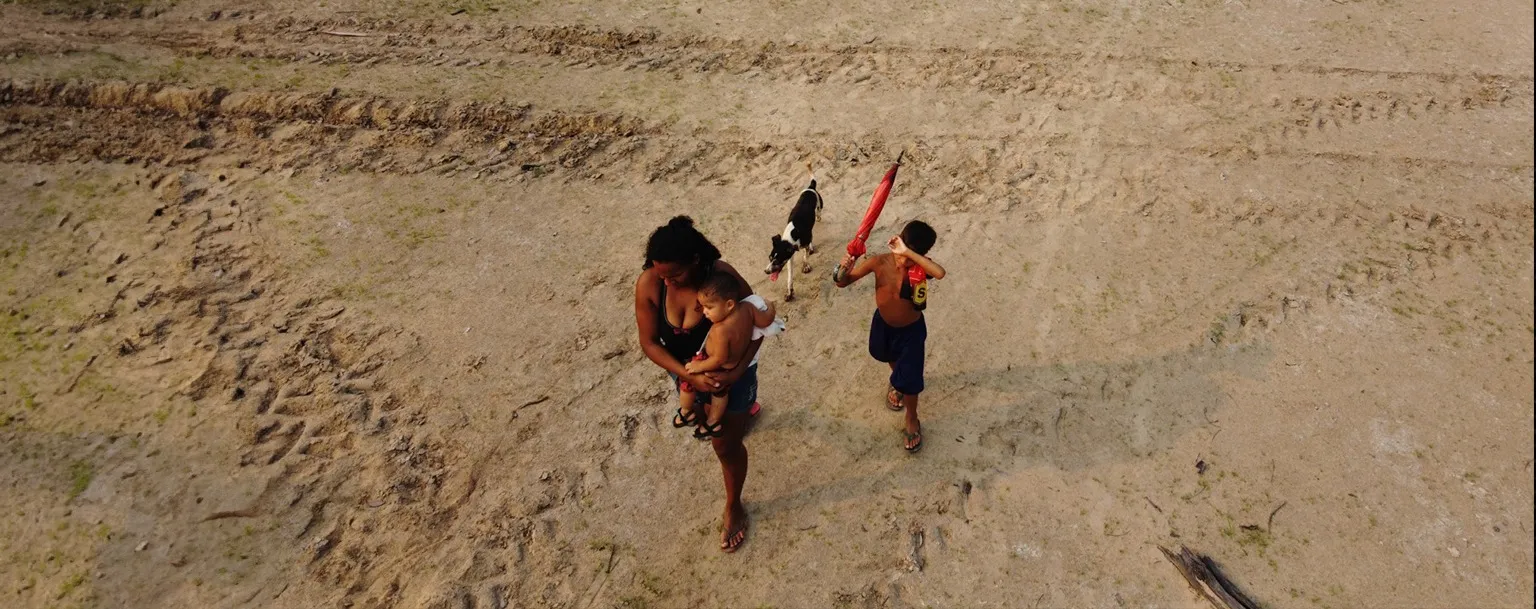Experts recommend nutritional measures to face drought
05 de July de 2024

Carol Veras – From Cenarium
MANAUS (AM) – As the drought season approaches in the Amazon, experts are warning of an increase in cases of malnutrition in the region. The prolonged drought threatens local agricultural production, compromising access to basic foodstuffs and exacerbating the vulnerability of riverside and indigenous communities.
The lack of rain impacts fishing and family farming, which are key sources of livelihood for thousands of families. CENARIUM gathered information from nutritionists on what can be done to curb malnutrition among the population during the emergency period.
“The riverside population has been facing the drought for some years and has developed survival strategies, such as storing food, including salting fish. During the drought, they consume non-perishable and ultra-processed foods, even though they are not ideal for their health, to ensure their survival,” nutritionist Rosilany Acosta told CENARIUM.

According to her, care must be taken with the consumption of industrialized foods, because they can lower the immunity of river dwellers, who generally eat organic food. The change in diet makes them more vulnerable to disease. “Hydration is essential, as it strengthens immunity, improves joints, prevents constipation, removes toxins and protects vital organs”.
The professional concludes that “nutrition plays a crucial role in this period, advising on possible harm to health and the need to reverse problems as soon as possible”. In an interview with EBC, Dr. Aline Ferreira recommended consuming foods with a high water content, such as pineapple, watermelon and melon. She also advised avoiding processed foods such as cod, sardines, canned tuna, dried meats and excessive consumption of butter, as they “impair hydration”.
According to the United Nations International Children’s Emergency Fund (UNICEF), the populations most vulnerable to drought include indigenous people, riverside dwellers, quilombolas and residents of peripheral areas, who already face situations of vulnerability.
These communities suffer from the loss of land and natural resources and have difficulty accessing basic services such as sanitation, health and education.Debora Nandja, head of the UNICEF office in Manaus, emphasizes that children and adolescents are the most affected, and a joint effort between government, civil society and the private sector is needed to respond effectively to emergencies.
To meet these challenges, UNICEF has developed an integrated action strategy to support children, adolescents and their families during the drought. The actions are coordinated with the Indigenous Health Secretariat (Sesai), the Government of Amazonas, city halls and indigenous organizations, with funding from the European Union. The strategy includes improving access to treated water in the most remote communities and strengthening local response capacity to health, sanitation and hygiene demands.
According to the Amazonas Health Surveillance Foundation (FVS-AM), 24,462 people contracted diarrheal diseases in October 2023, compared to 19,155 in the same period in 2022. Communities affected by the drought often resort to drinking untreated water from makeshift wells.
Forecast
In May, the governor of Amazonas, Wilson Lima (União Brasil), held a press conference to announce the measures that the state executive should take with regard to the period of drought predicted for the second half of 2024. According to Painel do Clima, the state’s monitoring website, river levels are expected to reach levels as low as last year, which resulted in the longest drought in 100 years.
With the aim of mitigating the impacts, the government has announced that it has issued environmental licenses to the Amazonas Environmental Protection Institute (Ipaam) for dredging four stretches of river in Amazonas. With the regularization, the process should begin before the critical period. “I went to the federal government to explain the concern we have about this year’s drought, which is expected to be very severe,” said Lima.
The dredging work will be carried out by the federal government, through the National Department of Transport Infrastructure (Dnit), and is expected to begin immediately once the licenses have been issued. Since last year, the river has still not reached its normal level. This year, the drought is expected to affect more than 150,000 families.
“Dredging has never been necessary in 121 years. This year we’re getting ahead of ourselves, because everything leads to the conviction that we’re going to have another drought as severe as last year. The stage we’re at now is that the National Department of Transport Infrastructure (Denit) has asked for a license from the Amazonas Environmental Protection Institute (Ipaam) to be able to do the job,” said the Secretary of State for Economic Development, Science, Technology and Innovation (Sedecti), Serafim Corrêa, in a statement to CENARIUM.
Read also: ‘Labclim’: UEA researcher warns of drought intensity in Amazonas this year

